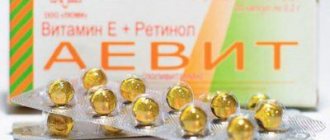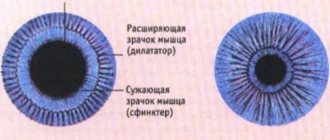Millions are spent annually on chewing gum advertising campaigns. Each manufacturer tries to present their products in the most noble way possible, without caring at all about the consequences for the end consumer . Is it true that such a popular remedy for healthy teeth and a snow-white smile actually has a detrimental effect on our health? What is the harm of chewing gum, how to protect yourself without giving up your usual “delicacy”.
What is chewing gum made of?
Chewing gum is made primarily from synthetic polymers with the addition of other components: sweeteners, flavors, preservatives, vitamins and enzymes. Some chewing gum may contain active substances that help whiten teeth and reminalize tooth enamel.
Sugar or glucose syrup is added as a sweetener to children's chewing gum. Sugar provokes the formation of a bacterial film on the teeth. The bacteria Streptococcus mutans actively multiply as a result of the formation of lactic acid. It, in turn, is released after the breakdown of sucrose by saliva. Bacteria contribute to the accumulation of dextrin in the oral cavity - it sticks to the surface of the teeth and forms an insoluble plaque. And already in the plaque, other bacteria begin to actively act, releasing acid and dissolving the hard tissues of the tooth. A number of scientists blame sugar and other refined carbohydrates for the widespread incidence of dental caries.
Adult chewing gum contains other sweet substances that do not contain sucrose and are lower in calories. However, those used cause a lot of controversy about their safety for humans.
Experiments on animals have demonstrated the following: aspartic acid - aspartame - can cause cancer and have a toxic effect on blood vessels and the nervous system. In chewing gum, aspartame is present in a minimal dosage, but if a person constantly uses chewing gum, this substance will accumulate in his body. As a result, this can disrupt the perception of the surrounding reality. Xylitol acts as a laxative and also promotes the formation of kidney stones. Sorbitol and isomaltite have a laxative effect.
There are also a lot of all kinds of ballast substances in chewing gum. Although we spit out the chewing gum, most of its components still enter the body. People with systemic diseases, kidney disease, and diabetes should be especially careful with chewing gum.
Chewing gum is highly not recommended for pregnant women. It increases the risk of developing allergic reactions in the fetus due to ballast substances, which the baby’s immunity begins to fight. This distorts the normal development of the child's immune system.
Xylitol
In 1988, the European Dental Association recommended chewing gum with xylitol after each meal as a preventative measure. Xylitol (E-967) is a sugar substitute that is poorly absorbed by the body. It is not fermentable, plaque bacteria cannot use it as food, which explains its anti-caries effect. Xylitol acts as a laxative, the maximum permissible daily dose is about 30 g.
What are the benefits of chewing gum?
At the beginning of the 20th century, the results of the first studies appeared on the benefits of chewing gum for digestion, the nervous system and dental health. A publication by Columbia University professor Hollingworth proves the following: the process of chewing reduces overall muscle tension and relieves stress. After this conclusion, chewing gum was introduced into the mandatory rations of the US Army.
A study by British psychologists from Cardiff University on March 8, 2013 proved that chewing helps you concentrate on performing complex tasks for long periods of time. Study participants who chewed gum performed better throughout the test, compared to non-chewers who were more alert at first but then lost concentration.
Chewing gum helps digest food. If you chew it after eating, it will help increase salivation. Saliva cleanses teeth and interdental spaces from food debris and bacteria, delivers nutrients to the enamel, and strengthens it.
Who shouldn't chew gum?
Chewing gum massages the gums and helps to evenly load the entire dental apparatus, which is good for the prevention of periodontal disease. Moreover, it is precisely for prevention - if you already have periodontal disease, you cannot chew gum. Chewing pressure is transmitted evenly across all teeth. It is provided by the circular ligaments of the teeth, so there is no overload. With periodontitis and periodontal disease, these circular ligaments are destroyed. As a result, the teeth are isolated and the chewing pressure is transmitted vertically to the bone tissue that surrounds each tooth. Because of this, compression of blood vessels, malnutrition and atrophy of bone tissue occurs, the necks of the teeth are exposed, the teeth lose stability and become even more mobile. Increased tooth wear is another contraindication to chewing gum.
You should not chew gum for more than 10-15 minutes after eating. Chewing on an empty stomach or for more than 15 minutes can lead to the development of gastritis or stomach ulcers due to the reflex release of acid that occurs when food enters the oral cavity. The stomach does not know that the chewing gum will be spat out and not swallowed.
When buying chewing gum, you should think about what is the harm of chewing gum and what is the benefit. Snacks while traveling in the subway or car, on the street or in a cafe. Situations arise when brushing your teeth after eating is not possible.
There is a business meeting or a date ahead and you need a pleasant breath.
Chewing gum composition
Plunging into the past, you understand that since ancient times people have been chewing something: before this chewing mass was made of resin or a mixture of leaves. Various types of chewing gum helped remove food debris, strengthen gums, and develop chewing muscles.
The first chewing gum in production was made from the resin of coniferous trees. The product did not gain wide popularity - it had an unattractive appearance, and there were pine needles in the elastic band. The composition changed, new technologies were created, new substances were added. To create an attractive look and taste, each manufacturer was looking for the perfect recipe.
The basis of modern chewing gum is rubber or latex. To ensure that chewing gum has an attractive appearance and an alluring aroma, sugar or its substitutes, natural and artificial flavors, various dyes and flavor enhancers are used. With prolonged use, artificially derived chemical additives negatively affect the body, causing complications or causing problems in various organs of life.
Compound:
- Sugar. A substance that can provoke the development of caries. Bacteria in the oral cavity, digesting sugar, form. The strength of tooth enamel decreases under the influence of acid.
- Xylitol, sorbitol. Natural sweeteners used in the manufacture of products for patients with diabetes. These are safe food additives, but their constant use leads to bloating and gastrointestinal disorders.
- Aspartame. A synthetic sugar substitute with a sweet taste, it is a source of phenylalanine. This substance, when entering the body, leads to hormonal imbalance. Aspartame has the ability to accumulate in the body.
- Titanium dioxide. A dye used to give chewing gum a snow-white color. There is no information on how dangerous it is, but experiments prove that titanium dioxide can trigger the development of cancer.
- Glycerol. It is considered a relatively safe substance, however, due to its ability to draw water from the body.
This is far from the complete composition of modern chewing gum. Manufacturers add various food additives to the composition of their products, based on the goal that needs to be achieved: attractive appearance, unique taste, stretchability for inflating bubbles.
"Orbit". What is inside?
“Orbit” is chewing gum, the composition of which includes various artificial fillers. However, this manufacturer is quite famous, which justifies the enormous popularity of the product it produces.
Looking at the composition of Orbit chewing gum, which is indicated on the back of the package, you can see the following elements:
• Chewing base – polymer latex.
• Components that create a sweet taste are maltitol E965, sorbitol E420, mannitol E421, aspartame E951, acesulfame K E950.
• Various aromatic substances, natural and artificial, which depend on the intended taste of the chewing gum.
• Coloring agents: E171 – titanium dioxide, which gives the chewing gum a snow-white color.
• Additional components: emulsifier E322 - soy lecithin, antioxidant E321 - an artificial substitute for vitamin E, which inhibits oxidation, sodium bicarbonate E500ii, thickener E414, emulsifier and defoamer, stabilizer E422, glazing agent E903.
There is also an Orbita option without sweeteners. The composition of Orbit chewing gum without sugar is the same as regular chewing gum, only it contains sweeteners: xylitol, sorbitol and mannitol.
Why is chewing gum harmful?
TV screens claim that chewing gum is good for teeth and gives fresh breath; chewing it is recommended between meals. How harmful is it to chew it all the time?
Consequences of long-term use:
- Promotes tooth decay. If you chew gum often and for a long time, pressure occurs on fillings and crowns. The gum sticks to the surface of the teeth, destroying them. Constant chewing provokes the development of dysfunction of the temporomandibular joint, and in children it disrupts the bite.
- Harmful to the stomach. During the process of chewing gum, active secretion of saliva occurs, and the body receives a signal to additionally produce gastric juice. If you chew it on an empty stomach, this process can provoke the development of ulcers and gastritis of the stomach.
- Harmful to pregnant women. Food additives included in gum provoke overexcitation and death of nerve cells and pose a great danger to the development of the fetus.
- Reduces concentration. The rubber band affects the performance of unconscious actions, deteriorating short-term memory.
- Not recommended during breastfeeding. The chemicals contained in chewing gum enter the mother's milk and negatively affect the newborn baby.
Chewing gum does not contain substances that directly have harmful effects on the body. Harm to health can be caused by uncontrolled and excessive chewing.
How does chewing affect the body?
Chewing gum can be harmful, and not just after your child swallows it.
Very often, this sticky substance can inexplicably get and become entangled in your child’s hair. How to remove it from there without damaging the child’s hair?
It is best to use vegetable oil to remove this product from your hair. For example, olive. She needs to saturate the gum and wait a few minutes. After the oil softens the gum, it can be carefully removed from the hair. The longer the gum is allowed to dissolve in the oil, the easier it will be to remove it from the hair.
Immediately after this procedure, you will need to apply shampoo to your hair, rub it on your hair and wait 2-3 minutes. After which you need to rinse it off with warm water and apply balm to your hair.
Mayonnaise and peanut butter can also be used to remove gum from hair. In this case, you need to proceed exactly the same as when using vegetable olive oil. Vaseline, high-fat hand cream, mouthwash, and other products also work well for removing gum from hair.
Another method, less pleasant, but no less effective, is freezing. The chewing gum should be carefully covered with ice so that it does not cause discomfort to the head. Once it freezes, it can be crumbled into small pieces. Then all that remains is to remove these pieces from the hair.
Chewing is a natural physiological process of the body designed to grind solid food with the teeth before entering it into the esophagus and stomach. If taffy is used as a meal replacement, an identical chewing reflex is triggered, activating a number of glands and facial muscles.
The primary and main effect of chewing gum in the context of the human body is based on increased salivation, which helps to moisturize the oral cavity and clean it in a natural way.
An important contribution to this process is also made by the properties of the product itself, which mechanically captures food particles in accessible places in the dentition.
In addition, a parallel massage of the gums is carried out, and the active chewing muscles receive a uniform load, which is associated with the special plastic, physical and mechanical properties of the chewing gum. The saliva released during chewing enters the esophagus through reflex swallowing.
Does the process of chewing bring benefits or, on the contrary, cause negative consequences for the body? This depends on many factors: the characteristics of the individual use of chewing candy (duration, timeliness of use, and so on), the quality of the product itself, the presence of a number of diseases in a person, and so on.
Is chewing gum harmful for adults and children and what can replace it, what will happen if you swallow the product - you will learn about this and much more further in our article.
Many people have known since childhood that eating and reading are difficult to combine; either food or information is not absorbed. Chewing gum not only calms you down, but also slows down your brain activity, reducing your attention and preventing you from concentrating. Although someone may disagree with these statements, this is everyone’s personal matter.
A Louisiana University study found that people who chewed gum after lunch were less likely to disrupt their diet with unplanned snacks. They were also less likely to eat high-calorie foods if they chewed gum every hour for three hours after eating. So, while chewing gum won't reduce weight on its own, it will reduce unplanned eating, helping you eat less and control your weight.
A study found that chewing gum increased blood flow to the brain by 25-40%. This way, more oxygen is delivered to the brain, which in turn increases brain functionality. Cognitive functions such as memory, concentration and reaction improve.
Andrey Sholey, a professor at the British Institute in Australia, has proven that short-term memory increases by up to 35% just from chewing gum. Be that as it may, excessive consumption will already cause harm.
Psychologists have long known that chewing gum reduces the stress hormone cortisol in the body and helps reduce tension. When you start chewing gum in an emotionally stressful situation, you often calm down and stop worrying. In fact, chewing gum can be a good substitute for habits like leg jerking or nail biting.
Although chewing gum does not directly help digest food, it does improve the functioning of the digestive system. This occurs by stimulating the secretion of saliva, which in turn makes it easier to swallow and activates digestive processes, including the secretion of bile and other auxiliary acids and enzymes that digest food. When you chew after eating, these digestive enzymes are released and help prevent indigestion.
Chewing gum reduces the amount of acid in the esophagus and reduces the risk of heartburn. This is facilitated by increased salivation. Therefore, you should not use chewing gum on an empty stomach. The body receives a signal to start eating and the production of acid can cause bloating.
The best way to keep your teeth healthy is to brush them regularly, but we all know that it's not always possible to brush your teeth after every meal. Chewing sugar-free gum is an alternative way to prevent tooth decay.
The American Dental Association recommends chewing gum for 20 minutes after meals as it has been shown to reduce the likelihood of holes, stains and gum inflammation. Chewing gum after eating also helps preserve tooth enamel. The main thing is to make sure that the gum does not contain sugar, which, on the contrary, destroys tooth enamel.
Due to the fact that chewing gum stimulates salivation, approximately 10 times more than at rest, it is of great help in the fight against dry mouth.
A cold is always unpleasant. And its symptoms are phlegm and mucus in the throat - and even more so. Amazingly, chewing mint gum can help fight them, although medication will be needed to completely get rid of the disease.
The positive property is associated with the mental side of chewing. Chewing gum not only eliminates the desire to eat something extra, but also helps you forget about addictive substances - nicotine and caffeine. Therefore, if you are trying to quit smoking or stop any other similar habit, chewing gum will help. You might be interested in the article 10 Most Expensive Addictions in the World.
Haunting melodies are not uncommon. 90% of people fall victim to them at least once a week. The melody gets stuck in your head and, despite all attempts, is not forgotten. Of course, there is no harm to the body, however, productivity decreases.
Most people can't do anything about it and just suffer. However, a study from the University of Reading in the UK found that chewing gum is the best way to cope with this disease. Now you know that you can chew it!
The benefits of chewing gum
If the harm of chewing gum is so great, why do adults and children buy it? Chewing gum, when used in moderation, is truly beneficial. It is worth adhering to simple rules.
- Chewing gum can really cleanse your mouth of food. When it is not possible to use a toothbrush, chewing gum will help. To obtain a positive effect, it is enough to chew it for five minutes.
- When chewing gum, gums are massaged and periodontal disease is prevented.
- Use it after meals. The chewing process promotes the production of saliva and stimulates the digestion process.
- Although not for long and not as effective as the advertisement says, mint pads add freshness to your breath and make it pleasant.
- Regular chewing calms the nervous system and helps with stress.
- Chewing gum is not a treat; to maintain oral hygiene, you must take precautions and use it only when necessary.
Chewing gum addiction
People who often experience stress are advised to chew something. If you eat high-calorie foods, this can lead to excess weight gain. The calorie content of chewing gum is scanty; the high-calorie component sugar is replaced with lower-calorie sweeteners. Chemical additives contain virtually no calories.
Constant chewing brings confidence and calms the nerves. It has an elastic consistency and the property of not dissolving over time. This promotes regular and prolonged chewing and can lead to gum addiction. Children, not realizing the harm of chewing gum, chew it all day, and with constant chewing, their attention is dulled and the thinking process slows down. The child cannot concentrate, and academic performance deteriorates.
Chewing gum composition
The birthplace of the first rubber chewing gum, patented in 1869 by W. Semple, is America. However, archaeological finds indicate that a similar product was used in Ancient Greece and the Middle East, only the basis of chewing gum was not rubber, but the resin of mastic trees. Such chewing gum was sold in America, being the predecessor of modern chewing gum.
Back then, small pieces of pine resin were mixed with beeswax and sold in portions. Perhaps then the harm of chewing gum was invisible to those who actively used it. Without synthetic polymers, flavor enhancers, preservatives, dyes, and flavors, it was much more harmless than its contemporary.
Over time, the composition of chewing gum ingredients has changed to meet consumer needs and to remain competitive. So, in 1880, its composition was enriched with corn syrup and peppermint, and in 1898, Dr. E. Beeman is trying to increase sales by adding pepsin powder and positioning chewing gum on the market as a remedy for diseases of the gastrointestinal tract.
However, there was no mention of the harmful effects of chewing gum. The version of its usefulness for teeth appeared in 1899 thanks to V. Canning, and remained a favorite in terms of promoting trade to this day. However, the composition of the chewing gum confirms the opposite.
There is a threat of harm to both the teeth and the gastrointestinal tract. It is possible to neutralize its negative impact only by knowing how much you can chew gum and what time of day is most suitable for this.
Quality checking
Like any other product, the elastic band is tested for quality. This is monitored by both factory workers and special mechanisms. The cut chewing gum goes to the packing robot. Workers inspect the approaching belt and remove defective parts. If the plant is very large, then this function is performed by computerized automatic installations.
They remove substandard products using a laser and an air cushion. The remaining chewing gum is packed by robot into cellophane or cardboard boxes. Then they are left in the warehouse, and on the day of removal they are packaged in batches according to the requirements of the stores. Trucks deliver the product to supermarkets and kiosks.
Defective chewing gum is not thrown away. It is put back into the mixer and processed a second time, because non-compliance with standards usually manifests itself in the wrong form.
Components
The basis of chewing gum is rubber, latex and other polymers of synthetic origin. They make up 60% of the volume of the finished product. No negative effects of polymers on the human body have been identified.
Glycerin (E422) – has the ability to draw water from tissues, therefore products with the addition of glycerin are contraindicated for people with kidney diseases and cardiovascular diseases. The opinion that there is very little glycerin in chewing gum is true, but do not forget that it is found in many other products: bread, candy, cookies, marshmallows, cakes and even dairy products.
Daily consumption of many glycerin-containing products can cause significant harm to health.
Butylated hydroxyanisole (E320) is an antioxidant, preservative, and antioxidant. The additive was tested on animals, and in large quantities the carcinogenic effect of the product was observed. There is no such data regarding humans. In some cases, it acts either as an anticancer agent or as a cancer-causing agent.
Citric acid (E330) – does not have a negative effect on the human body, and only large amounts that get on the mucous membranes and skin can cause a burn. But the amount of additive in chewing gum is not dangerous.
Emulsifier (E322) is produced on the basis of egg yolk. This supplement cannot cause serious harm to the body, but people with a tendency to allergic reactions should avoid products containing lecithin (E322).
Sweeteners:
- Aspartame is a sweetener that doctors recommend completely eliminating from the diet. Regular intake of aspartame causes allergies, headaches, sleep disturbances, and a depressed mental state. Aspartame cannot be washed off from the mouth with saliva, so the sweetish taste in the mouth causes a constant feeling of thirst. Phenylalanine, being a component of aspartame, disrupts chemical processes in the brain, affects the functioning of the nervous system and human hormonal levels.
- Xylitol (E697), maltitol (E695) are relatively safe food additives, but can cause gastrointestinal disorders.
- Sorbitol (E420) is an emulsifier and sweetener that is widely used in the production of products for patients with diabetes. However, it cannot be called safe for human health, since long-term use of sorbitol-containing products leads to visual impairment, diabetic retinopathy, gastrointestinal disorders and flatulence. Sorbitol is prohibited for use in the production of baby food, and in the USA it is classified as an additive hazardous to human health.
The dye most often used to give chewing gum a snow-white color is titanium dioxide (E171). On the one hand, there is no information about the dangers of this substance. But one should doubt its safety, since during experiments on rats, inhalation of titanium dioxide powder caused the development of cancer. In addition, vegetable dye (E120) is used, which is an allergen.
This is a shortened list of chewing gum components that are used in production to give it more attractive qualities: ductility, better extensibility for blowing bubbles and a unique taste. But with a complex effect on the body, they can give a number of negative manifestations.
"Dirol": component composition
Dirol is another well-known manufacturer of chewing gum. The components from which it is made differ from those used for Orbit, but there are still some similarities.
Composition of Dirol chewing gum:
• Chewing base – polymer latex.
• Sweeteners - isomalt E953, sorbitol E420, mannitol E421, maltitol syrup, acesulfame K E950, xylitol, aspartame E951.
• Additives of flavoring substances depend on the intended taste of the chewing gum.
• Coloring agents – E171, E170 (calcium carbonate 4%, white dye).
• Additional elements - emulsifier E322, antioxidant E321 - an artificial substitute for vitamin E, which helps inhibit oxidation processes, stabilizer E441, texturizer E341iii, thickener E414, emulsifier and defoamer, stabilizer E422, glazing agent E903.
E422, when it enters the bloodstream, causes intoxication of the body.
E321 increases the level of bad cholesterol.
E322 increases saliva production, which subsequently negatively affects the gastrointestinal tract.
Citric acid can provoke the formation of tumors.
Consequences of long-term use
The harm caused by chewing gum both from its components and from the process of continuous chewing itself is as follows:
In kindergarten or at home, a child can go to bed without taking the chewing gum out of his mouth. Its entry into the respiratory organs can lead to suffocation or consequences incompatible with life.
The disadvantages of chewing gum that neutralize the usefulness of its use include:
- A short-term effect of improving oral odor, lasting only a few minutes.
- Deterioration of short-term memory from chewing gum and manifestation of absent-mindedness.
- The negative impact of constant use of chewing gum throughout the day on the condition of nails, hair, and skin.
- Along with strengthening the maxillofacial apparatus, a child may develop an incorrect bite caused by chewing, and teeth may become loose.
Video: harm of chewing gum, composition – shock!
Is there any harm? (Video)
We have all heard about the dangers of chewing gum for the body. Indeed, constant chewing of gum can cause gastrointestinal problems due to increased salivation and secretion of gastric juice, as well as addiction, akin to smoking. Often, substances included in chewing gum are accused of provoking the development of diabetes, which also has quite good reasons.
The negative impact of chewing gum on teeth is often associated with the fact that it can supposedly destroy crowns and fillings. In fact, this is unlikely. Many people probably remember from childhood hard toffees that stuck tightly to teeth and fillings, sometimes even tearing them out. But modern high-quality chewing gum is not a threat to modern high-quality fillings.
Chewing gum is sometimes blamed for loosening teeth. How this happens is not specified. Our teeth are designed to handle much coarser food than soft gum, so it cannot thin the enamel or loosen the tooth.
The main disadvantage of chewing gum is their composition. Almost all chewing gum ingredients are obtained chemically, but not all of them undergo such extensive testing that there is no doubt about their harmlessness. Some of the components of chewing gum can have toxic effects on the body.
But chewing gum containing sugar can provoke the development of caries. Sugar in the mouth is an excellent environment for the growth of bacteria, which cause caries, gradually destroying tooth enamel. Therefore, it is important to choose sugar-free chewing gum.











